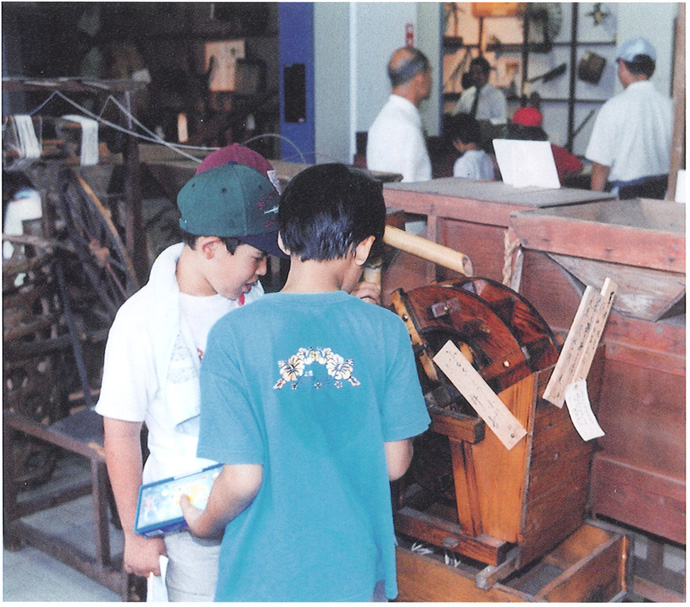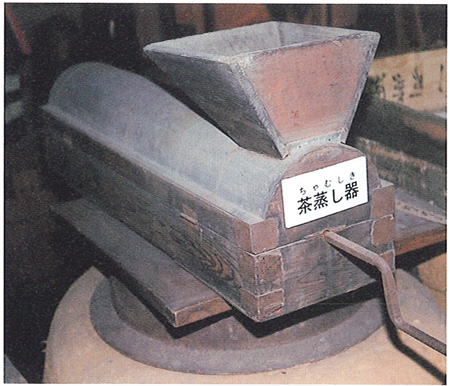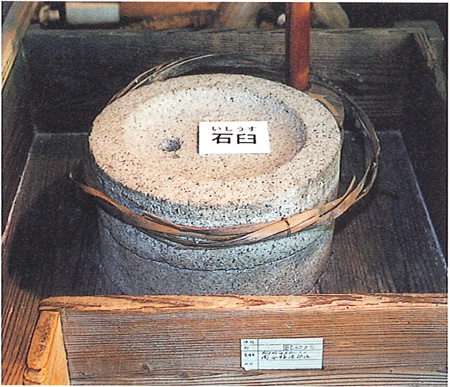 郷土資料館に行って昔のことを調べてみましょう。 郷土資料館に行って昔のことを調べてみましょう。 | Let's go to the Museum of Local History and Culture and find out about the past. |
| みんなで昔(むかし)の道具(どうぐ)を調(しら)べているうちに,この他(ほか)にも古い道具はないか知りたくなりました。 | When we were all finding out about old tools, we want to find out if there were other old tools. |
| そこで,古い道具などがたくさんかざってある町の郷土資料館に行くことにしました。見学してわかったことは,しっかりメモをとり,学校に帰ってからメモしたことを整理(せいり)しました。 | That's when we decided to go to the town's Museum of Local History and Culture, which had a lot of old tools on display. We took careful notes on what we found out on our tour and organized our notes when we got back to school. |
 郷土資料館の人の話 郷土資料館の人の話郷土資料館には,昔の人が畑や家で使(つか)っていた大切な道具がたくさんあります。昔の瑞穂町(みずほまち)では,養蚕(ようさん)がさかんで,そこで使っていた道具やお茶作りの道具などがあります。その他にも,畑で使っていたいろいろな形のくわやかまど,石うすなどのくらしの道具を大切にかざっています。 | Talking to a person from the Museum of Local History and Culture At the Museum of Local History and Culture, there are lots of important tools that were used in the homes and fields by people in the past. Sericulture thrived in the past in Mizuho and there are sericulture tools at the museum as well as tools used when growing tea. In addition, there are lots of tools that were used in the fields such as hoes and sickles of different shapes, as well as millstones and other tools used in the daily lives of the people on display in the museum. |
| 養蚕 かいこをかってまゆをとること。 まゆからきぬ糸をとり,着物などを作った。 | Sericulture To raise silkworms for their cocoons. Silk is taken from the cocoons and used to make kimonos and other things. |
| 郷土資料館取材(しゅざい)メモ | Museum of Local History and Culture report notes |
| ○道具の名前 ○使い方 ○いつごろ使われたか ○よい点 ○ふべんな点 ○わかったこと | ○Name of the tool ○How it was used ○When was it used ○Pros ○Cons ○What we learned |






